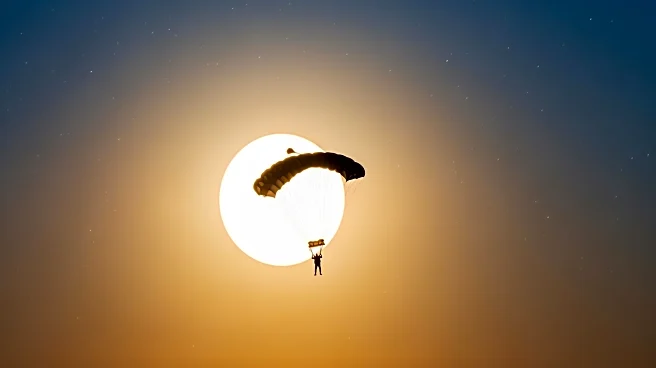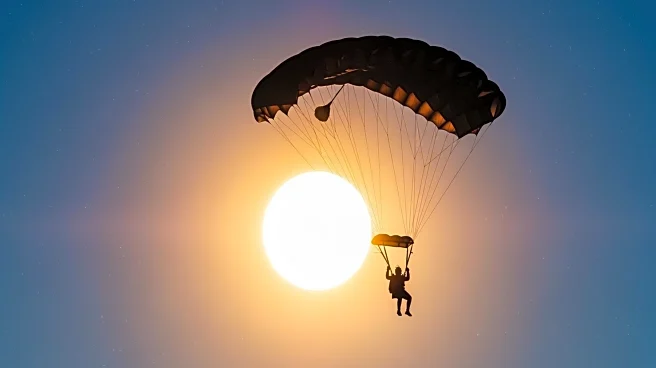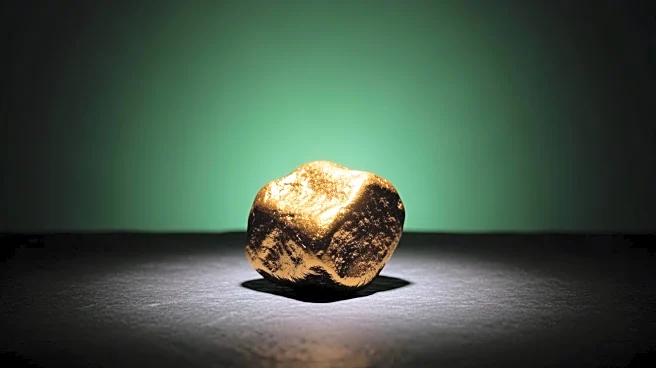What's Happening?
Arizona-based astrophotographer Andrew McCarthy successfully captured a skydiver silhouetted against the sun in a photograph titled 'The Fall of Icarus.' The image required months of planning, complex
mathematics, and six attempts to achieve. McCarthy collaborated with Gabriel C. Brown, who jumped from a small aircraft at 3,500 feet while McCarthy positioned himself 8,000 feet away with telescopes. The photo utilized hydrogen-alpha light to reveal the sun's chromosphere, providing a dramatic backdrop for Brown's silhouette.
Why It's Important?
This achievement is significant in the field of astrophotography, showcasing the potential for creative and technical innovation. The use of hydrogen-alpha light to capture the sun's chromosphere highlights advancements in photographic techniques. The image represents a unique intersection of art and science, demonstrating the possibilities of capturing celestial phenomena in new ways. It also underscores the dedication and precision required in astrophotography, inspiring others in the field.
What's Next?
Following this successful project, McCarthy may continue to explore innovative photographic techniques and collaborate on similar projects. The image could gain recognition in photography and science communities, potentially leading to exhibitions or publications. McCarthy's work may inspire other photographers to experiment with capturing celestial events, contributing to the evolution of astrophotography.
Beyond the Headlines
The project highlights the role of collaboration and planning in achieving complex photographic goals. It raises questions about the boundaries of photography and the potential for capturing unseen aspects of the natural world. The use of specialized equipment and techniques reflects the ongoing advancements in technology and their impact on artistic expression.













